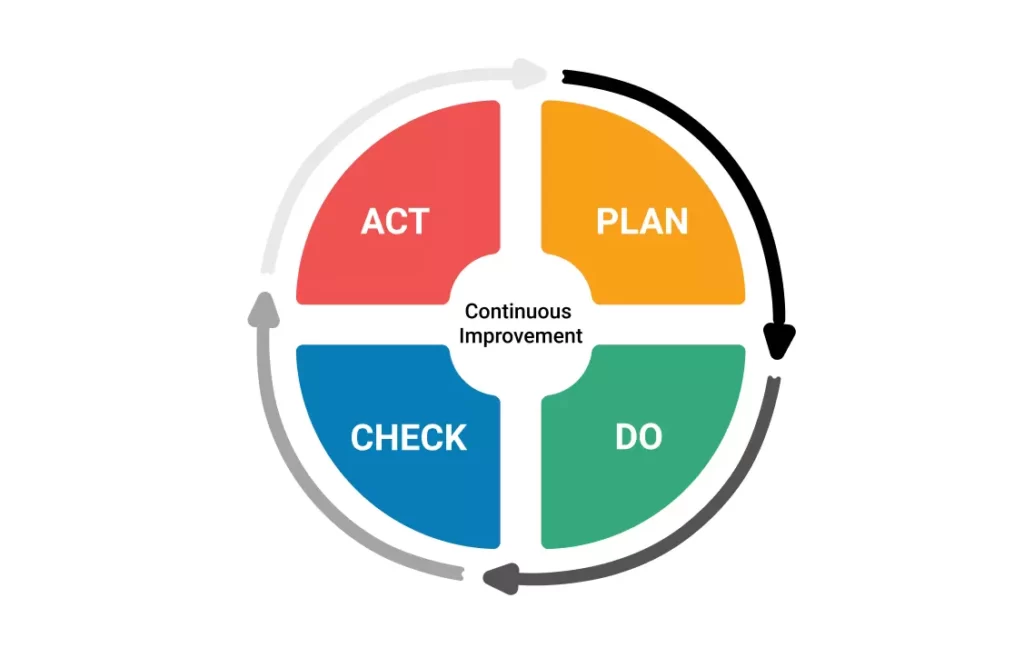Achieve customer satisfaction through a QMS
Customer satisfaction is a key aspect of quality management systems (QMS). The ultimate goal of any business is to satisfy its customers by providing them with high-quality products and services. In today’s highly competitive business environment, the importance of customer satisfaction cannot be overstated. Satisfied customers are more likely to be repeat customers, recommend your products or services to others, and give positive reviews. This is where a well-implemented QMS can help businesses achieve customer satisfaction.

A QMS is a set of processes, policies, and procedures that are put in place to ensure that a business consistently delivers products and services that meet or exceed customer expectations. It involves a continuous cycle of planning, implementing, monitoring, and improving processes to ensure that quality is maintained at all times. In order to achieve customer satisfaction, a QMS should focus on the following key areas:
- Understanding Customer Needs and Expectations: A QMS should ensure that a business understands the needs and expectations of its customers. This can be achieved by conducting market research, analyzing customer feedback, and monitoring industry trends. By understanding customer needs, a business can tailor its products and services to meet those needs and exceed expectations.
- Designing Quality Products and Services: Once a business understands customer needs, it can design products and services that meet those needs. A QMS should ensure that all products and services are designed with quality in mind. This involves using quality materials, adhering to industry standards, and ensuring that products and services are reliable, safe, and efficient.
- Delivering Quality Products and Services: Once products and services have been designed, a QMS should ensure that they are delivered to customers in a timely and efficient manner. This involves ensuring that all processes are streamlined, and that products and services are delivered on time and without defects.
- Monitoring Customer Satisfaction: A QMS should continuously monitor customer satisfaction to ensure that customers are satisfied with the products and services they receive. This can be achieved by conducting customer surveys, analyzing customer feedback, and monitoring customer complaints. By monitoring customer satisfaction, a business can identify areas for improvement and take corrective action.
- Continuous Improvement: Finally, a QMS should focus on continuous improvement. This involves analyzing processes, identifying areas for improvement, and implementing changes to improve quality. By continuously improving processes, a business can ensure that it meets or exceeds customer expectations and maintains high levels of customer satisfaction.
Achieve customer satisfaction through a QMS
In order to achieve customer satisfaction, a QMS must be implemented and maintained effectively. The following are some tips for businesses looking to achieve customer satisfaction through a QMS:
- Involve Employees: All employees should be involved in the QMS process. This involves training employees on QMS processes, providing them with the tools and resources they need to perform their jobs effectively, and encouraging them to provide feedback on processes.
- Set Realistic Goals: Businesses should set realistic goals for customer satisfaction. This involves setting measurable objectives, such as reducing customer complaints or increasing customer retention rates, and tracking progress towards those objectives.
- Use Technology: Technology can be used to streamline processes and improve efficiency. Businesses should consider using software solutions to manage customer feedback, track quality metrics, and identify areas for improvement.
- Monitor and Analyze Data: Businesses should continuously monitor and analyze data to identify trends and areas for improvement. This involves tracking customer complaints, analyzing customer feedback, and monitoring quality metrics.
- Take Corrective Action: When issues are identified, businesses should take corrective action to address the root cause of the issue. This involves analyzing the issue, identifying the root cause, and implementing changes to prevent the issue from occurring again in the future.
Maintaining customer satisfaction is an ongoing process, and it is important to continually assess customer feedback and adjust quality management systems accordingly. A key aspect of customer satisfaction is communication, both with customers and within the organization. It is important to communicate with customers to understand their needs, expectations, and feedback, and to communicate within the organization to ensure everyone is aware of customer feedback and how it is being addressed.
Another important aspect of customer satisfaction is employee training and development. Employees should be trained on how to effectively communicate with customers and how to address any issues that may arise. Additionally, employees should be empowered to make decisions that will benefit the customer and the organization. This can be achieved through a combination of training, clear guidelines, and a supportive organizational culture.
It is also important to have a system in place for addressing customer complaints and resolving issues. This can include a formal complaint process, as well as a system for tracking and analyzing complaints to identify any trends or recurring issues. By addressing these issues, organizations can improve customer satisfaction and prevent future problems.
Finally, organizations should regularly assess and review their quality management systems to ensure they are effectively addressing customer needs and expectations. This can include conducting internal audits, as well as seeking external feedback from customers and other stakeholders (1). By continually assessing and improving quality management systems, organizations can maintain high levels of customer satisfaction and build long-term success.
Conclusion
In conclusion, customer satisfaction is a critical component of any quality management system. By focusing on communication, employee training, issue resolution, and ongoing assessment, organizations can effectively address customer needs and expectations and maintain high levels of customer satisfaction. This can lead to increased customer loyalty, improved business performance, and a stronger reputation in the marketplace.


